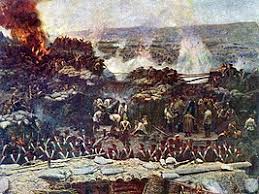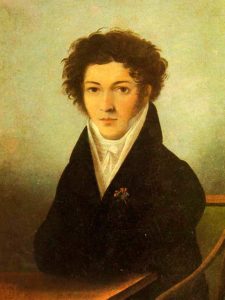exposition is expounded
Image and theme of the war in Tolstoy’s “Sevastopol Stories”
 In the military stories (“Raid”, “Forest Cutting”, “Sevastopol in December 1854, in May and August 1855”) Tolstoy dwells on the question of how legitimate war, demanding so many bloody victims, is legitimate . This idea is particularly clear in his “Sevastopol Tales” (see their analysis), which describe the famous defense of Sevastopol during the Crimean War.
In the military stories (“Raid”, “Forest Cutting”, “Sevastopol in December 1854, in May and August 1855”) Tolstoy dwells on the question of how legitimate war, demanding so many bloody victims, is legitimate . This idea is particularly clear in his “Sevastopol Tales” (see their analysis), which describe the famous defense of Sevastopol during the Crimean War.
Battles and wars were depicted many times in Russian and foreign literature … – Almost always, these pictures are different, “poetizatsii”, elevated tone, a kind of “militarism, glorifying the exploits of warriors and leaders … Continue reading
Two crosses of Konstantin Batiushkov
 This year marks the 230th anniversary of the birth of Konstantin Nikolaevich Batyushkov (1787–1855) and the 200th anniversary of the release of his only book, the two-volume book Experiments in Verse and Prose (1817). An outstanding personality – bright, heroic and tragic – the Russian poet Konstantin Batiushkov occupied a special place in the history of Russian literature. Pushkin considered him one of his teachers in poetry, recognized the works of Batiushkov as a poetic miracle and in this sense called him a “wonderworker”. Continue reading
This year marks the 230th anniversary of the birth of Konstantin Nikolaevich Batyushkov (1787–1855) and the 200th anniversary of the release of his only book, the two-volume book Experiments in Verse and Prose (1817). An outstanding personality – bright, heroic and tragic – the Russian poet Konstantin Batiushkov occupied a special place in the history of Russian literature. Pushkin considered him one of his teachers in poetry, recognized the works of Batiushkov as a poetic miracle and in this sense called him a “wonderworker”. Continue reading
“The Brothers Karamazov”
 Dostoevsky writes not a philosophical treatise or a theological system, he writes a novel. Religious-philosophical material is introduced into the framework of the romantic genre and is developed according to its laws. A tense-dramatic plot is being built, in the center of which stands a mysterious crime; ideological masses are involved in a whirlwind of action and, colliding, cause spectacular explosions. In The Brothers Karamazov, the religious mystery is paradoxically combined with a criminal novel. For all its philosophical depth, it is one of the most fascinating and popular works of Russian literature. Continue reading
Dostoevsky writes not a philosophical treatise or a theological system, he writes a novel. Religious-philosophical material is introduced into the framework of the romantic genre and is developed according to its laws. A tense-dramatic plot is being built, in the center of which stands a mysterious crime; ideological masses are involved in a whirlwind of action and, colliding, cause spectacular explosions. In The Brothers Karamazov, the religious mystery is paradoxically combined with a criminal novel. For all its philosophical depth, it is one of the most fascinating and popular works of Russian literature. Continue reading



